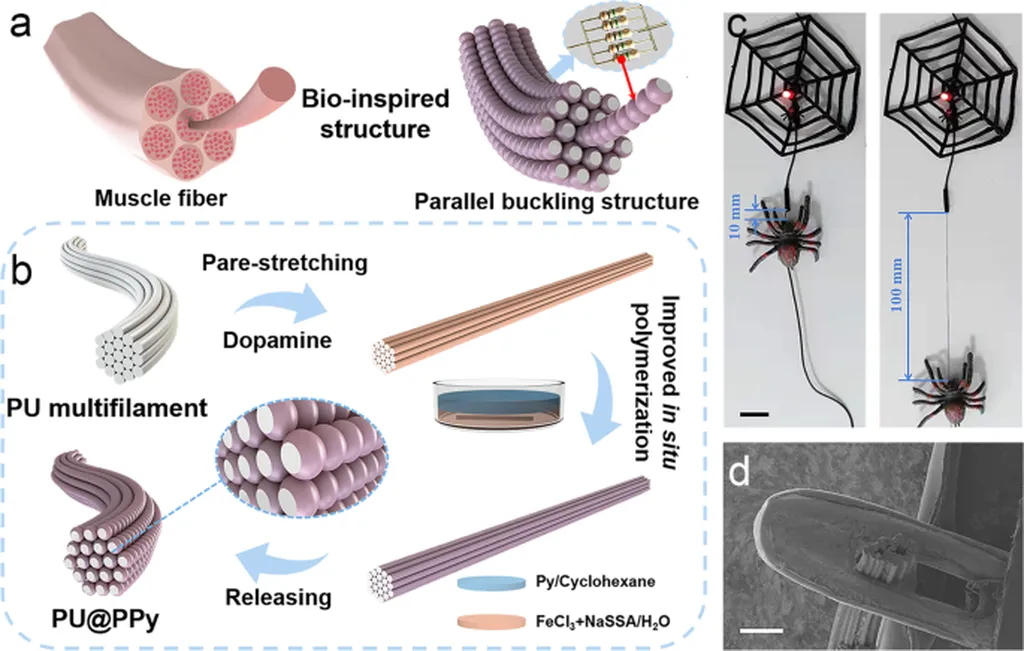In the quest for high-performance stretchable strain sensors, a team of researchers led by Weijuan Wang from the Department of Aeronautical and Aviation Engineering at The Hong Kong Polytechnic University has made a significant breakthrough. Their work, published in the journal *npj Flexible Electronics* (which translates to *Nature Partner Journal: Flexible Electronics*), introduces a computational design framework that could revolutionize the development of ultra-sensitive strain sensors, with profound implications for various industries, including energy.
Strain sensors are crucial components in numerous applications, from monitoring structural health in buildings and bridges to enhancing the functionality of wearable electronics and robotics. However, achieving high sensitivity and reliability in these sensors has been a persistent challenge. Wang and her team have tackled this issue by exploring the optimal strain distributions in heterogeneous strain engineering, a method that involves varying the strain across different regions of a material to enhance performance.
Through Monte Carlo simulations, the researchers derived the optimal strain topology that maximizes sensitivity. “We found that sensitivity is maximized by either reducing the strain value of low-strain regions or increasing their area proportion,” Wang explained. This insight led to the development of a general computational design guideline that can be applied across different heterogeneous strain engineering methods.
To validate their findings, the team designed patterned graphene strain sensors (PGSSs) with parameterized grooves. By precisely modulating the small strain values and proportions of these grooves using finite element analysis, they achieved remarkable improvements in sensitivity. “Adjusting these parameters enhanced sensitivity by factors of approximately 10.7 and 3.3, with the highest gauge factor reaching 25,600 at 100% strain,” Wang noted. This level of sensitivity is unprecedented and opens up new possibilities for applications in the energy sector, such as monitoring the integrity of pipelines and other critical infrastructure.
The practical implications of this research are vast. For instance, in the energy sector, ultra-sensitive strain sensors can be used to detect minute changes in structural integrity, enabling early intervention and preventing catastrophic failures. Additionally, these sensors can be integrated into robot grippers to gauge object dimensions with high precision, enhancing automation and efficiency in various industrial processes.
The computational framework developed by Wang and her team is not only applicable to graphene-based sensors but also to other materials and methods in heterogeneous strain engineering. This versatility makes it a valuable tool for researchers and engineers seeking to push the boundaries of sensor technology.
As the demand for smart and flexible electronics continues to grow, the ability to design and manufacture high-performance strain sensors will be crucial. Wang’s research provides a robust foundation for future developments in this field, paving the way for innovations that could transform industries and improve our daily lives. The publication of this work in *npj Flexible Electronics* underscores its significance and potential impact on the scientific community and beyond.

